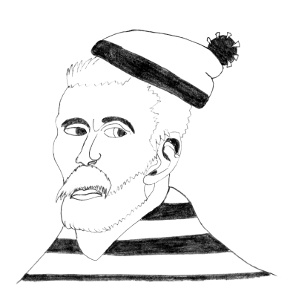Where is the art?

It's easy to dismiss electronic music if you're used to live acoustic or classical music. When you see a skilled musician on stage, you know they have spent thousands of hours learning every nuance of their instrument, practicing and refining until their bodies are, themselves, instruments. To see all that exercised in front of you is art. Electronic artists basically come on stage and press a few buttons. Where's the art in that?
Of course, electronic music fans know that the art isn't when you press the buttons. It happens much earlier, in the hours upon hours spent in production, carefully arranging and tweaking each sound in a way that is impossible when you're working in real time with ultimately fallible performers. The lack of art in performance enables the art of production.
Hip-hop has less harmonic complexity than, say, jazz or classical music. Even sophisticated hip-hop relies on relatively simple instrumentation and arrangement. In fact, most classic hip-hop is just drum loops and repetitive samples. But that's not where the art is. You have to listen to the complex percussive patterns of the beats and the vocals and the way they play off each other. That focus on the structure of the sounds rather than their tone allows for a different and powerful kind of expression it's hard to find elsewhere, with the possible exception of beat poetry.
You won't find art in comics if you're looking for life-like detail, complex brushwork, or a challenge to the limits of visual abstraction. You will find it if you're looking for extreme stylisation and larger-than-life depictions of action and emotion. You won't find art in videogames if you're looking for narrative storytelling (books do it better), character development (TV does it better) or spectacular visuals (movies do it better). The art in games is in the way they make you the storyteller, inviting you to create an experience for yourself that nobody else could give you.
And you won't find art in code by looking for animations or music or lights that blink on and off. Those things might be art, but they're animation art, musical art, or blinkenlight art. The art in code comes from exploring the nature of code itself, the way it abstracts action, the way it recursively and fractally explains itself, and the way it universally claims all computation as its own.
Art is ultimately the rendition of creativity, wherever it can be found. If something appears to be not art, perhaps it isn't, but perhaps you're looking in the wrong place. New kinds of art often look a bit like old kinds of art, so if you get too used to looking in the same place, you may find yourself falling victim to misdirection. You're trying to figure out what's going on in the magician's hand, when really the place to look was their sleeve.